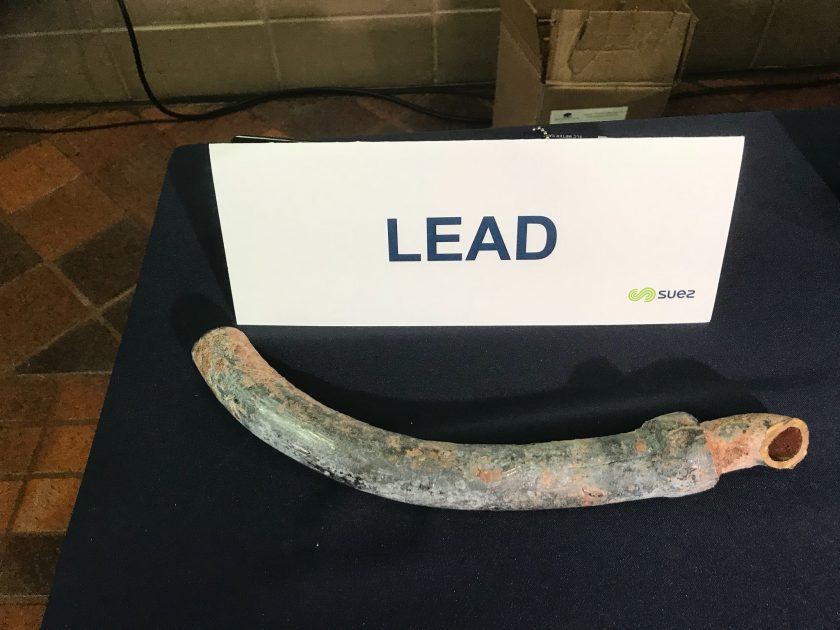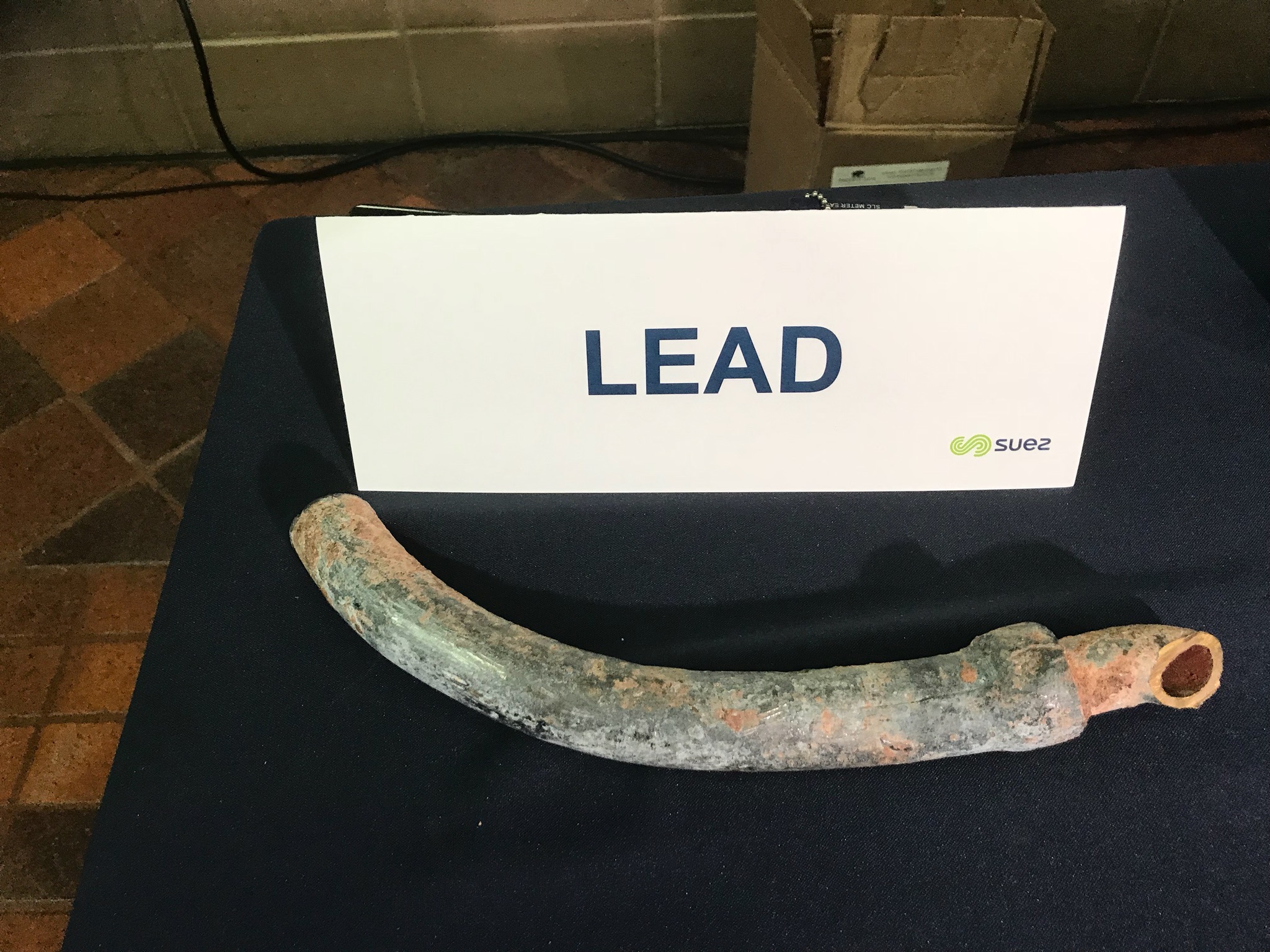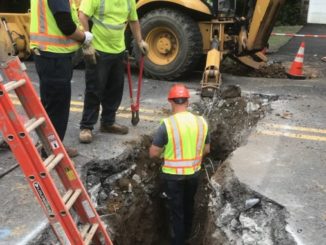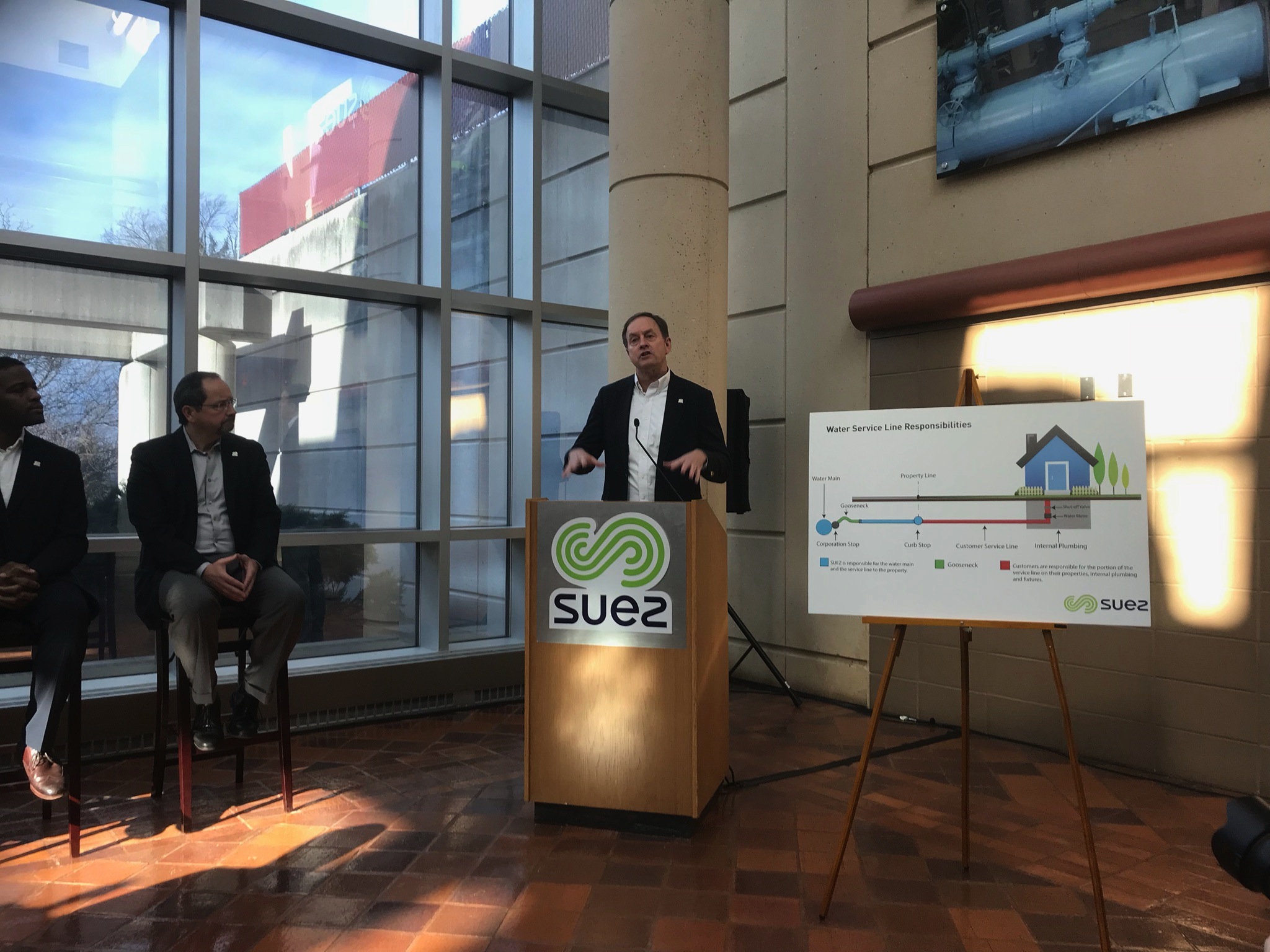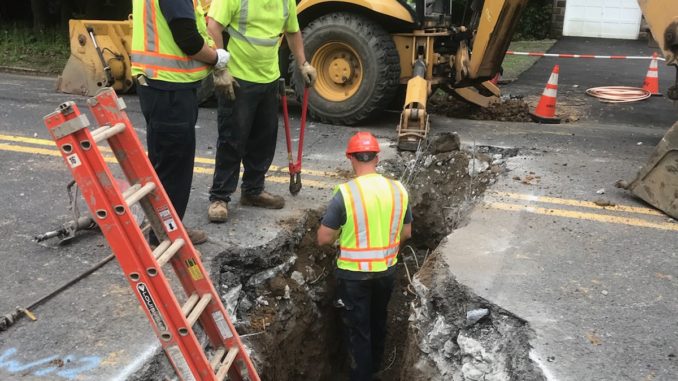
TENAFLY—At the end of the day on East Clinton Avenue, it was two more lead connections removed and hundreds and hundreds of more to go throughout Bergen and Hudson counties in 2019.
Two more Suez-owned lead pipes—either connections to a main service line or a water service line that connects to the customer’s line at the curb—were to be replaced with copper lines and connections on a normally busy Tenafly street, which was closed to traffic on May 17.
A Suez crew leader said because the county was repaving Clinton Avenue this year, Suez was removing known lead pipes now before milling and repaving begins.
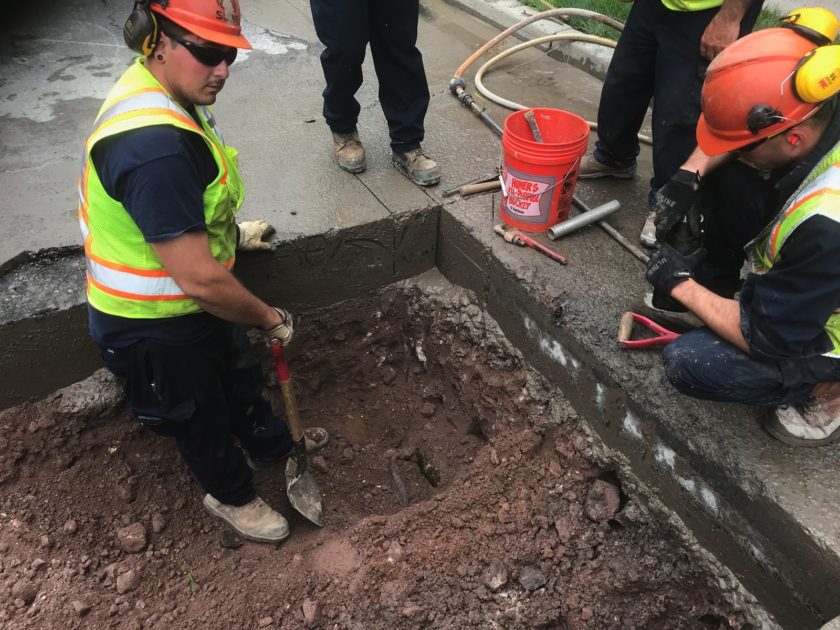
On May 17, four lead replacement projects were scheduled in Tenafly on East Clinton Avenue and most projects involved replacing goosenecks or lead service lines.
Goosenecks are flexible connections that connect to a main water line and enter a utility-owned service line. The utility-owned lead service line connects to a customer’s service line generally below the curb.
Two crews were busy working over an hour while Northern Valley Press visited a lead line replacement project. Crews had dug a 4-foot-deep trench length-wise on the street and were busy uncovering the utility service line and a gooseneck connector.
Meanwhile, a 3-foot-square “curb box” dug about 4 feet deep on the property curb line could be seen and was checked to determine the make-up of a customer service line entering a single-family residence.
2,400 lead-lined pipes
The two replacement projects are part of an expedited $15 million program begun by Suez in March to remove and replace nearly 2,400 lead lined pipes in 2019, following high lead level readings found in 15 of 108 homes tested in Bergen and Hudson counties over the last six months of 2018.
Based on Suez data, the 2,400 pipes represent about 25 percent of utility-owned lead service lines.
Following discovery of the high lead level readings, Suez held a news conference in mid-January to talk about possible causes but declined to reveal specific towns or readings that exceeded federal safety standards.
Within weeks, several towns had passed resolutions “demanding” that Suez begin replacing lead pipes systemwide on an expedited schedule.
Suez North America provides water service to 200,000 residential and business customers in 57 municipalities in Bergen and Hudson counties—serving approximately 800,000 residents.
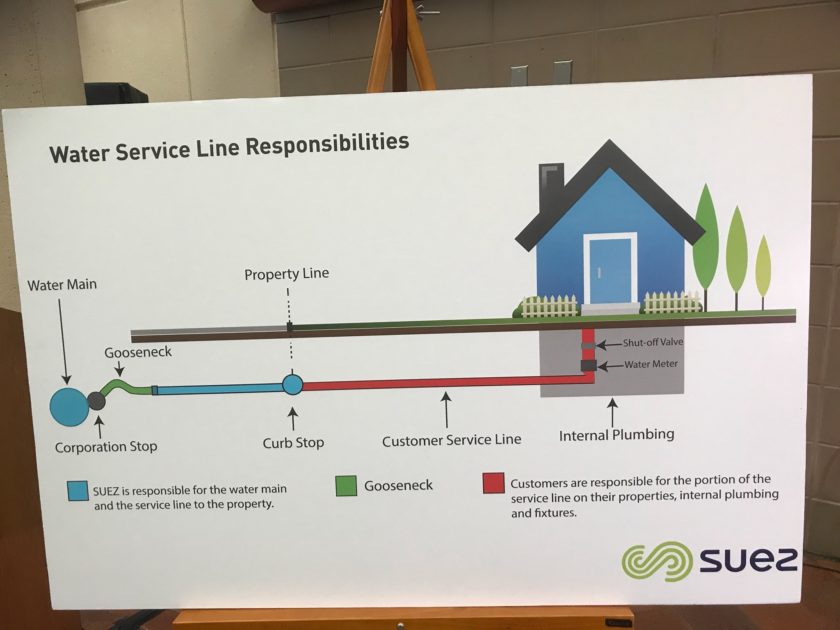
The two separate digs on East Clinton Street removed two lead-lined goosenecks and replaced them as well as the brass service lines that ran from the gooseneck to the curb box.
The “curb box” is the connection buried four to five feet below the curb line where a Suez-owned service line connects with the customer water service line, which enters a home or business. Suez officials said all brass service lines found are replaced with copper.
The curb box excavation is done by Suez to confirm its records are correct, said Suez spokeswoman Debra Vial, who noted should the customer’s line turn out to be lead, the replacement project will not be done.
Vial said if a homeowner’s line is lead, the company will not remove its lead line or gooseneck because this will cause elevated lead levels in the customer’s line for months to come.
Suez proposed a program to replace a customer-owned lead line in April for $1,000, with the additional costs borne by Suez customers as a surcharge on bills.
The program must be approved by the state Board of Public Utilities, who have not yet discussed or voted on the program.
99 percent meet standards
“To date, 2,120 (customers) have asked us to test the drinking water in their homes. Of those tests, 99 percent meet health standards. In fact, the vast majority of those tests did not detect any lead in the water,” said Vial via email May 20.
The federal standard is 15 parts per billion.
Suez provides free water sample tests to customers with utility-owned lead service lines or connections, she said, noting that results are not yet in from the first round of testing since high lead levels were found. Those results—which cover the period January to June—are due in July. Vial said the state requires “a minimum” of 100 homes tested every six months.
“So far all towns and counties have been responsive to get this done,” Vial said.
“We want the problem solved,” she said noting removing lead lines, lead connections, and home-based lead fixtures, as well as corrosion control treatment are all part of solving elevated lead levels.
Vial said in 2015 Suez “proactively” addressed the lead issue by adding zinc orthophosphate to its corrosion-control treatment at its Haworth treatment plan. She said Suez is working actively to reduce lead.
“Corrosion control is important to us,” she said, noting Suez is examining five different ways to minimize lead leaching from lead pipes throughout its network serving 200,000 customers.
High lead readings
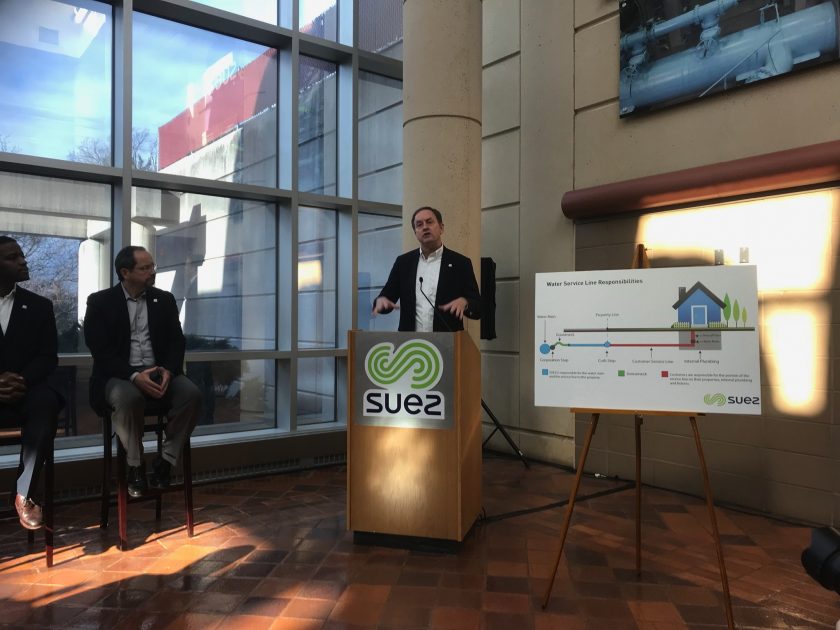
Vial said Suez did not know “chemistry wise” what caused 15 of 108 homes previously tested in 2018 to be above the federal 15 parts per billion standard.
She said Suez will only test homes that either are served by a lead line or have internal lead fixtures.
Vial said Suez now knows lead lines affect less than 5 percent and goosenecks affect less than 10 percent, so initial estimates of 30,000 potential customers affected were on the high side, she said.
She said initial findings of lead line excavations and replacements found “less than half” of suspected lead service lines were lead. She said the company planned to release revised estimates of potential customers affected.
Getting the lead out
When Northern Valley Press arrived on East Clinton Avenue and DePeyster Avenue at 11:30 a.m., two Suez crews had been digging up separate areas on East Clinton to reach and replace two lead gooseneck connections.
“We’re taking the lead our wherever we find it,” Vial said.
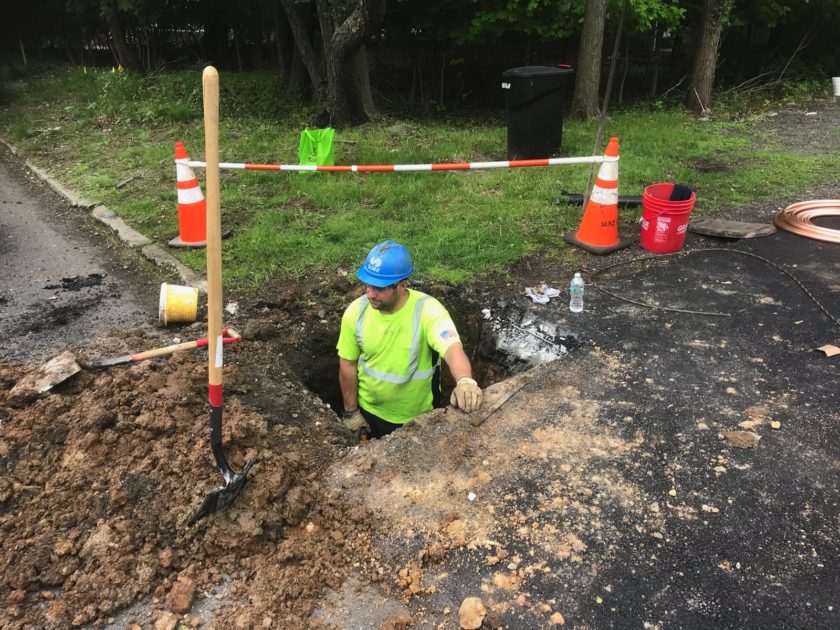
“Approximately 4 percent of our customers have a utility-owned lead service line, the pipe that connects the main to the property line. In addition, approximately 12 percent of our customer connections have a lead gooseneck, a 14-inch piece of pipe that connects the main to the service line. While we are working to remove this lead from the system, we caution customers to check the fixtures and plumbing in their homes and businesses for lead,” Vial emailed.
Vial said Suez will be looking at new ways to reduce lead levels through research.
She said new equipment to be installed will enable Suez to run water through a lead line at the Haworth plant and enable them to test the impacts of a lead line on water coming from the Haworth plant.
‘See what’s happening’
“We can see what’s happening in the system and in homes without having to go out there,” she said.
She said “harvested” lead lines—lead lines replaced by Suez crews—are being shipped for detailed chemical analysis to have the deposits inside of lead pipes tested.
These analyses may provide clues to how to treat the water—or corrosion control—that can reduce lead levels systemwide.
“Sometimes you can replace two in a day, sometimes three, sometimes one,” Vial said, noting that Suez had 16 crews out replacing lead pipes on May 17.
